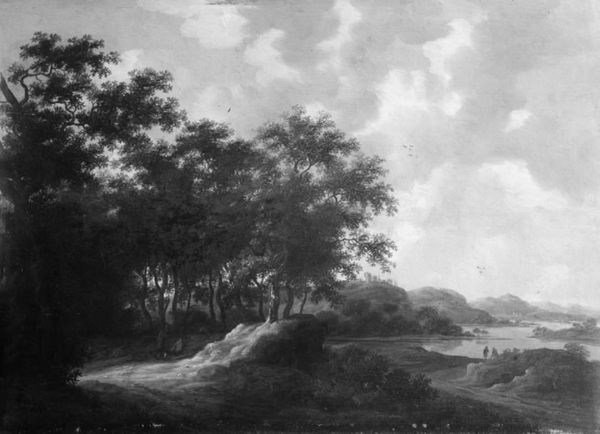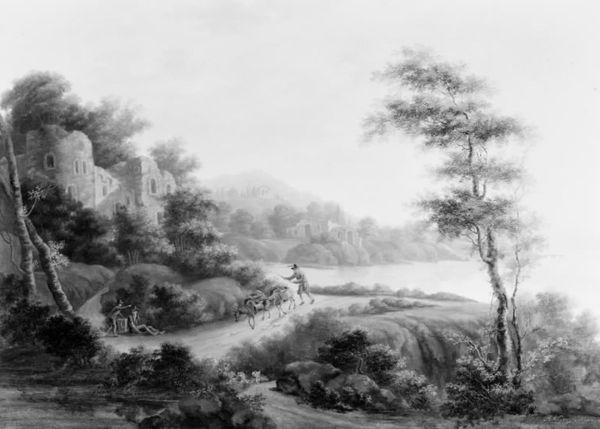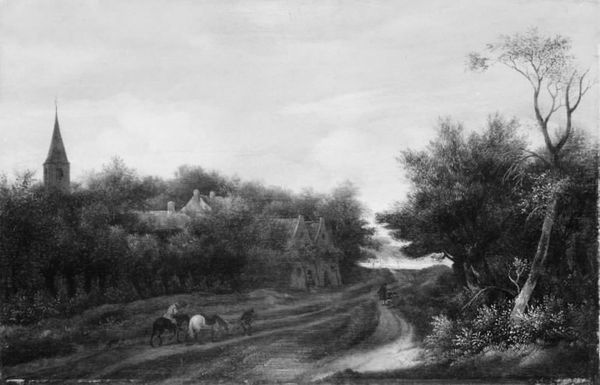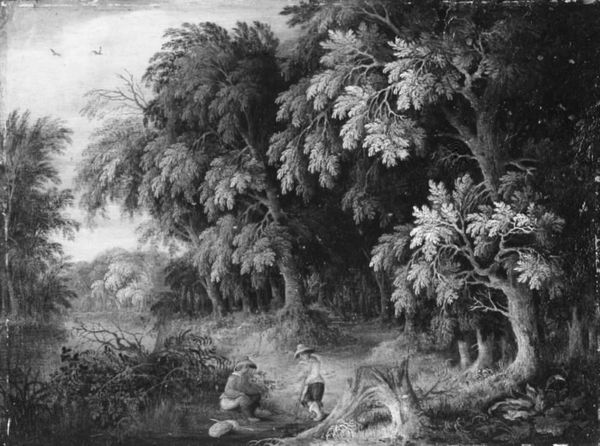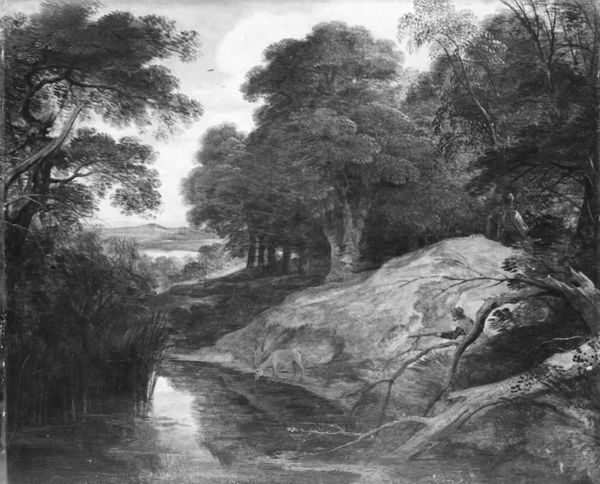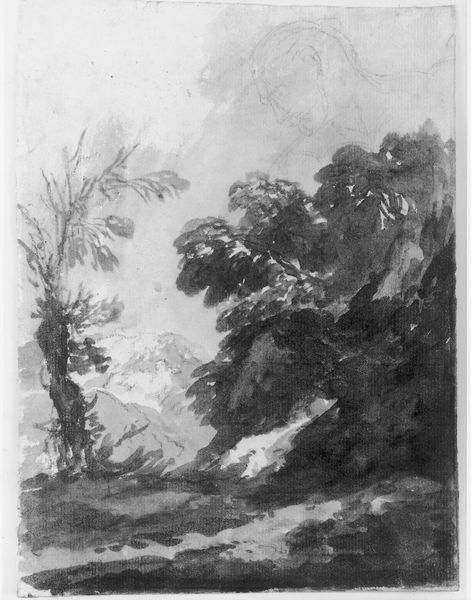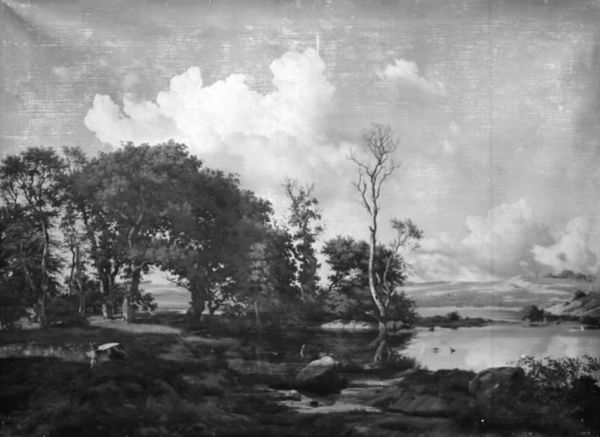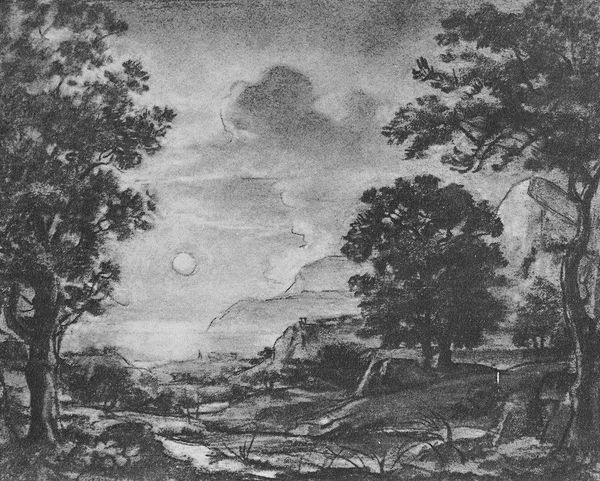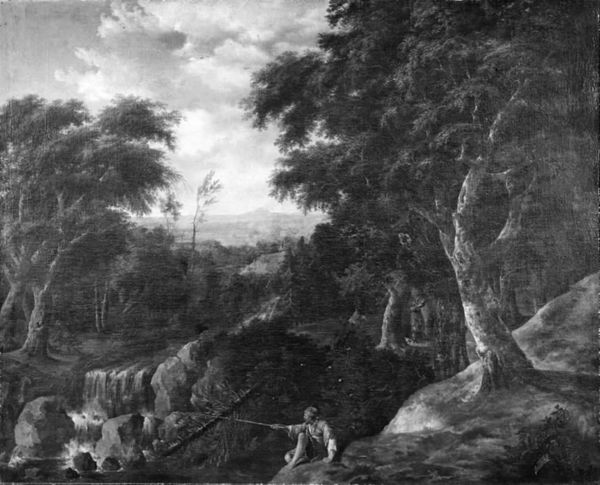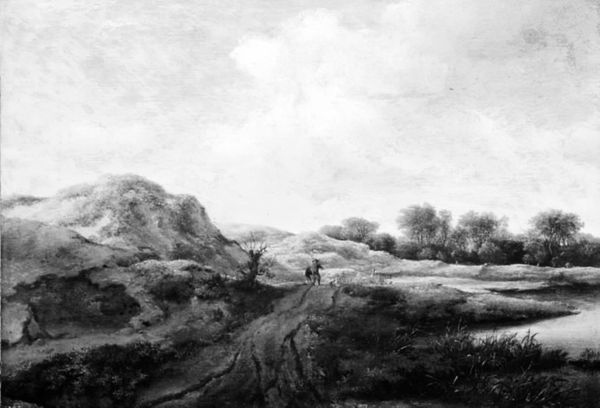
painting
#
dutch-golden-age
#
painting
#
landscape
#
monochrome
#
monochrome
Dimensions: 112 cm (height) x 95 cm (width) (Netto)
Editor: This is Jacob van der Croos' "Landscape," painted in 1659. It's currently housed in the SMK. What strikes me is the use of a monochrome palette - it lends a real sense of melancholy. What do you see in this piece? Curator: The limited palette amplifies the symbolic weight. It compels us to ask, what's been drained away here? Is it color, vibrancy, certainty? Dutch Golden Age landscapes often idealised nature, reflecting prosperity. However, the artist uses light and shade to construct more psychological depth. See the prominent tree to the left? Its size can represent strength, endurance, family or something lost to time, maybe its foliage holds our collective memory of those long since past. Editor: Interesting. So the tree isn't just a tree; it’s more of a cultural signifier? Curator: Precisely. Trees can become associated with particular peoples and places through history. Ask yourself: how do trees connect people to place? The landscape's subdued tone could point toward anxieties beneath the surface of that 'golden age'. Is there a dialogue between nature and humanity or some sort of lament being captured here? Editor: I hadn’t considered that. It makes the lone figure walking even more significant somehow. Curator: Exactly. How does this muted landscape echo your own experience or perhaps the story of your family lineage, linking your emotional landscape to a physical location through image, and perhaps memory? Editor: That gives me a lot to think about! Thanks, that was really enlightening. Curator: My pleasure. Looking at the layers of symbolic landscape can give us insight into how a shared cultural experience gets created and recorded for later viewers, as ourselves.
Comments
No comments
Be the first to comment and join the conversation on the ultimate creative platform.

